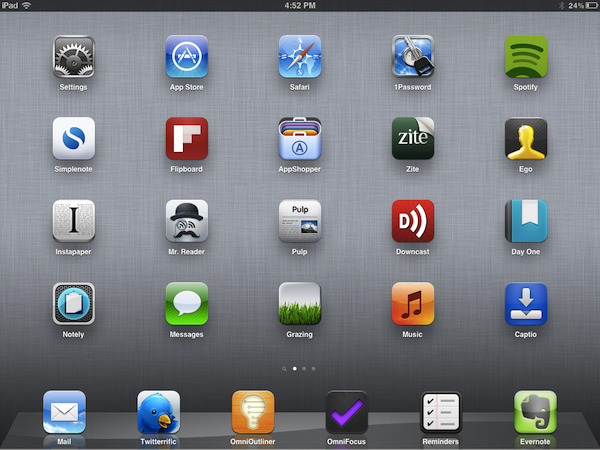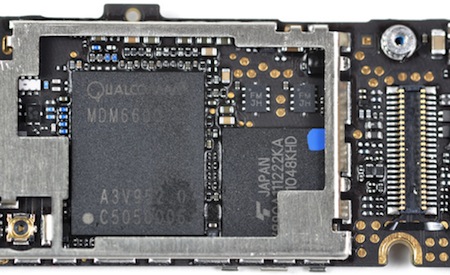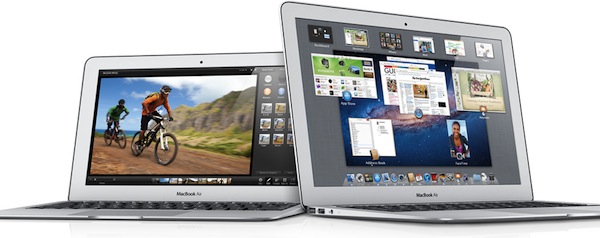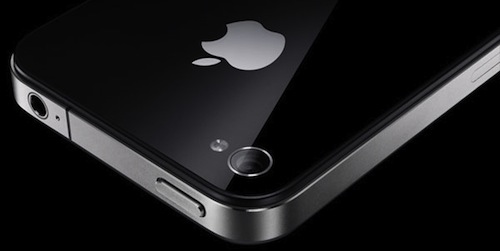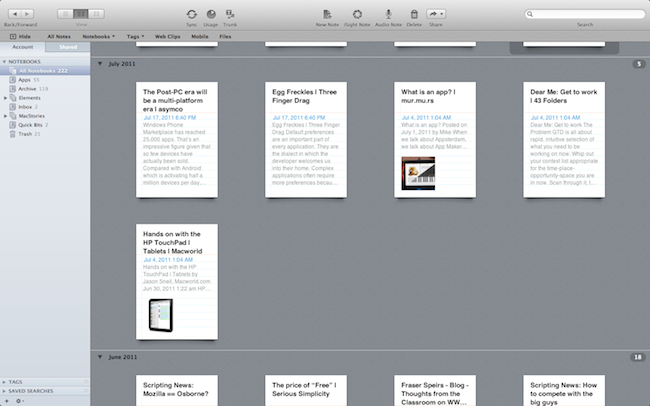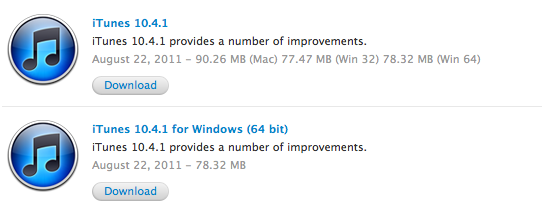Here are today’s @MacStoriesDeals on iOS, Mac, and Mac App Store apps that are on sale for a limited time, so get them before they end!
#MacStoriesDeals - Tuesday
Samsung Uses “2001: A Space Odyssey” Movie As Evidence Against Apple’s iPad Design→
Samsung Uses “2001: A Space Odyssey” Movie As Evidence Against Apple’s iPad Design
Florian Mueller at FOSS Patents reports on Samsung’s latest documents filed against Apple’s motion for preliminary injunction in the United States:
Ever since Apple started to assert the design of the iPad against other manufacturers, many people have been wondering whether there’s actually prior art for the general design of the iPad in some futuristic devices shown in sci-fi movies and TV series. And indeed, Samsung’s lawyers make this claim now in their defense against Apple’s motion for a preliminary injunction.
These newly provided documents include a screen grab of Stanley Kubrick’s 1968 movie “2001: A Space Odyssey”, which shows two “tablet devices” on a table. Samsung’s lawyers write:
As with the design claimed by the D’889 Patent, the tablet disclosed in the clip has an overall rectangular shape with a dominant display screen, narrow borders, a predominately flat front surface, a flat back surface (which is evident because the tablets are lying flat on the table’s surface), and a thin form factor.
The ongoing series of lawsuits between Apple and Samsung is getting really complex and difficult to follow, and this is the first example of something interesting Samsung will likely pursue in the coming weeks: providing prior art as evidence that Apple didn’t really invent anything new with the iPad’s design. I wonder if Samsung will use Pixar’s “The Incredibles” too?
A Trusted System
Over the past few months, I’ve noticed a trend emerging in my daily app consumption and workflow: as the App Store gets populated by thousands of new applications every day and developers struggle to get noticed in the sea of iPhone and iPad releases and “promotions”, I increasingly tend to rely on “a trusted system”, rather than constantly tweaking my home screen or dock to accommodate new apps from “indie devs” to try out, and perhaps replace with something else entirely the week after.
More than a trend, people who know me well might argue that I have a problem: I switch between apps less, and thus I am becoming that kind of guy that doesn’t care about what’s new in spite of my professed interest for innovation and good software.
But that’s my point exactly, and there’s an important difference between caring about new apps and trusting only a few selected ones for my work that I’d like to point out in this article.
Why should I buy the latest to-do app for iPhone or the next RSS reader for the iPad? Why should I constantly tweak and fiddle when the trusted system I’ve built is serving me so well? Some people, including me, are big advocates of App Store discovery and innovation: you never know what hidden gem the Productivity category might hide beneath hundreds of “wallpaper customizers”, and therefore it is an app lover’s job to navigate the App Store with the sole purpose of discovery in mind. With half a million apps to choose from, those who set out to explore the intricate App Store maze are the Magellans of the digital distribution era. Yet, I believe app discovery should be the reason behind good information and curiosity, not the ultimate goal towards getting things done or simply enjoying iOS devices.
We, as geeks, want to be – or at least “feel” – productive with our iPhones and iPads. Whereas we look at “the average user” and justify our expenses saying that unlike those people, we actually do stuff with Apple devices, the other end of the spectrum is equally true in my opinion, but we often don’t see it: all kinds of people (“the users”) are now serious about iOS, and whilst for some buying an iPhone will always be related to the status symbol, more customers than we, as geeks, usually think of are starting to look at iPhones and iPads as productivity platforms. It’s not just for the nerds or the fashion victims anymore. And as people get serious about iOS, they develop the “trusted system awareness” in that they start looking for apps to rely on without hesitation on a daily basis.
For me, the trusted system has become a synonym of great software developed by people that are serious about the bits and Xcodes they work with. Software from people that have something to lose if things go south. Apps from developers that are deeply invested in the platform – apps from people that often do this for a living but that are also users of their own creations. And this synonym has led me to trust the smaller, indie devs less, because I always fear the app I’m showing interest in will be discontinued tomorrow and never come back to support my needs.
It’s not like this hasn’t happened before. Too many times I’ve decided to fit an app in my workflow, only to find out months later the developer had no willingness whatsoever to maintain it or at least come clean and say “look, it was just an experiment”. And I can understand that point of view, really. I’m not saying garage developers and seven year-olds shouldn’t take their first steps in iOS development and see what’s like to gain popularity in the App Store. Not at all. I’m looking at us, the users who are serious about iOS, and deconstructing the difference between being curious, which is legitimate, and not getting anything done because of the constant tweaking, which is poisonous.
We need to separate work from leisure and app discovery. If we’re really committed to proving that iOS devices can be fantastic replacements for trucks, we need to get serious and understand that switching between apps and feverishly mining for the latest productivity goldmine won’t make you smarter or “more productive”. On the other hand, developers need to understand that just because they’ve released a new Google Reader client or GTD app, they shouldn’t expect thousands of users to jump on board and hit Buy.
iOS users have come to the point where the trusted system is more important. They know what developers and “names” to follow in the long term, and they’re happier when said developers provide an ecosystem for their apps that will make spending money on three different platforms less painful.
From personal experience, I see myself “trusting” people like The Omni Group, Evernote, The Iconfactory, Agile Bits, Edovia, Smile, Acrylic Apps or Tapbots more and more every day. I know I can get actual work done by using their apps, I know I can look forward to great customer support and shoot them a tweet when I’ve got a question – I can spend $50 bucks knowing that the work and enjoyment I’ll get in return will be greater.
But that’s not to say I’ve stopped giving the benefit of the doubt to “new kids on the block”, or that I’ve given up on trying to find the hidden gems in the App Store caves. Those who read this site know that I’ve started using Mr. Reader and Grazing Browser on my iPad and iPhone – apps from two relatively less-known developers that, however, have showed outstanding support, commitment to their software and a steady flow of software updates in the past weeks. To me, these seem like people who are serious about what they do. And I’m willing to trust them even if they haven’t been around for 10 years like others in this industry. More apps like Prowl, Notesy and Notely also come to mind.
iOS devices are now playing an important role in our lives, and we shouldn’t stop exploring all the ways to make them better with new apps, and different workflows. But I believe no one can blame us for choosing the trusted system when it’s time to work, and stop tinkering.
App Developer Logs Suggest An iPhone 5 With Dual-Mode Support
It is becoming more and more likely that the iPhone 5 will feature a dual-mode GSM and CDMA radio to eliminate the need for two separate models for the different networks. The latest piece of evidence is a report from TechCrunch in which at least one developer found evidence that Apple is testing the iPhone 5 with App Store apps with logs from a device suggesting an iPhone 5 with a dual-mode radio. The log reported a device with two different mobile network codes (MNC) and mobile country codes (MCC) which are used to uniquely identify mobile carriers.
Sure enough, some registrations for the app – which the developer also asked not to be named – were logged from a new Apple device, using the MNC/MCC codes from both Verizon and AT&T.
The Verizon iPhone 4 and iPad 2 actually already contain a Qualcomm chipset that actually supports both the GSM and CDMA standards - Apple chose not to enable that capability (a SIM card slot would have also been required). Rumors of the iPhone 5 throughout this year have however been consistent in suggesting that one model will support both standards - even the Verizon CFO made comments earlier this year that their belief was that the next iPhone will be a “global device”.
[Via TechCrunch]
Launch Of Refreshed MacBook Air and Lion Boosts Recent Mac Sales Numbers
Last month’s release of new MacBook Airs and OS X Lion seems to have given Apple a significant boost in sales for the first month of the September quarter. The latest statistics from NPD reveal that year-over-year, Mac sales were up by 26% - to put that into context it means that Mac growth outpaces the growth of the PC market six-fold.
Piper Jaffray analyst Gene Munster believes that if that kind of growth continues Apple will easily make the estimates of 4.5 million total Mac sales for the quarter. He noted to his clients that the Lion, MacBook Air and Mac Mini launches in mid-July helped inflate Mac sales for the month. However, he did caution them that “these tailwinds will fade throughout the September quarter and year-over-year compares get slightly tougher in the last two months of the quarter”.
The rapid Mac sales growth has seen the platform outpace the growth of the PC market for 21 consecutive quarters and most believe that trend will continue for some time yet. Ben Reitzes of Barclays notes that they expect Apple to continue to gain share in Macs in the long term, despite the iPad’s presence. He adds that their “estimate for Mac growth of 18 percent year-over-year for Apple’s C3Q, may turn out to be conservative even though the global economy appears to be slowing quite a bit.”
[Via AllThingsD]
Report: Apple To Offer A Cheaper 8 GB iPhone 4 Within Weeks
Apple may be preparing to launch a revised iPhone 4 that would feature a smaller 8 GB flash drive within weeks according to a report by Reuters today. It suggests that Apple may be preparing to launch an iPhone that would be priced at a lower level to help target emerging and the pre-paid mobile markets - something which Apple has expressed interest in utilising.
Most recently Apple’s COO, Tim Cook, said that Apple wanted to do “clever things” to attack the prepaid market so that the iPhone could be “for everyone”, not “just for the rich”. The obvious question is whether this iPhone 4 is more than just the old iPhone model at a lower price point with reduced storage - as was the case with the iPhone 3GS. It could just be that Apple decides to aggresively lower the price of this iPhone model - going further than what they have done with the iPhone 3GS and 3G when they were deprecated. Alternatively it could mean a new iPhone “4S” that is cheaper but also features some minor feature additions.
Reuters doesn’t specifically put a date on when this model could be released but past trends and common sense would suggest it launches alongside the new iPhone 5. They concur with previous iPhone 5 rumors and suggest it will feature a larger screen and better camera - they also note that Hon Hai and Pegatron have been told to prepare production capacity for 45 million units.
[Via Reuters]
Evernote 3.0 for Mac Released: New Lion-only Features and Redesigned Interface
Following the release of a new Evernote app for iOS earlier today that brought a completely redesigned iPad interface, rich text editing and support for viewing shared notebooks, the Evernote team has followed up with the release of Evernote 3.0 for Mac, a major update to the desktop app that aims at enhancing the experience for new OS X Lion users, as well as introducing several fixes and improvements under the hood for both 10.7 and older OS X versions.
Like Evernote 4.1 for iPad, Evernote 3.0 for Mac brings a new design for the “all notes” view, which, however, unlike the tablet version is not really enabled “by default” and requires users an extra click to be accessed. The Evernote developers, in fact, have decided to unify the Mac and iOS experience by bringing the iPad’s interface back to the Mac only in full-screen mode, which is fully supported on Lion. As I previously teased in my MacBook Air review, the new Evernote for Mac doesn’t simply scale up content when entering full-screen mode (which can be activated from the upper right corner of the application’s window): rather, Evernote changes the standard List, Snippet or Thumbnail views to a new “full-screen Snippet” one that looks exactly like its iPad counterpart. Bigger snippets offer a broader view of text and images within notes, and they also provide a way to check out a note’s creation date and time. Full-screen mode in Evernote also features the same month headers seen on the iPad, it allows you to close them at any time, and it displays a note counter next to each month. Read more
Apple Releases iTunes 10.4.1 with Keyboard, Album Artwork Fixes
Apple released an update for iTunes a few minutes ago, bringing the app’s version number to 10.4.1 and including in a small delta update – available on Macs through the Software Update control panel – various fixes for the keyboard’s media keys, album artwork, and VoiceOver. From the changelog:
- Fixes a problem where the media keys on some third-party keyboards work inconsistently with iTunes
- Addresses issues with adding artwork to songs and videos
- Resolves an issue which may cause iTunes to become unresponsive when purchasing an HD movie
- Fixes a problem where iTunes may take longer than expected to open after waking your Mac from sleep
- Addresses issues with VoiceOver support
iTunes 10.4.1 is available from Apple’s iTunes website and Downloads page, as well as Software Update. The update is available for Macs, Windows 32-bit and 64-bit machines. The app was recently updated to feature full Lion support and a completely rewritten Cocoa codebase, though a newer version of iTunes (10.5) has already been seeded to developers for iOS 5 testing.
#MacStoriesDeals - Monday
Here are today’s @MacStoriesDeals on iOS, Mac, and Mac App Store apps that are on sale for a limited time, so get them before they end!




